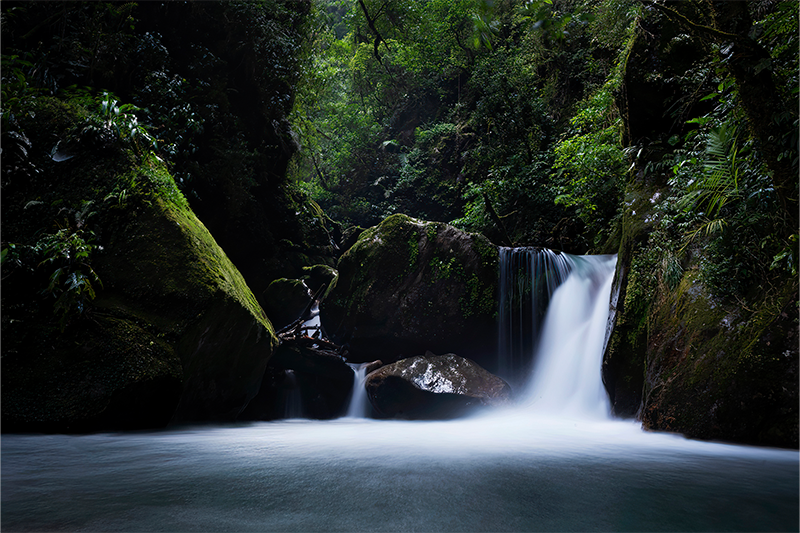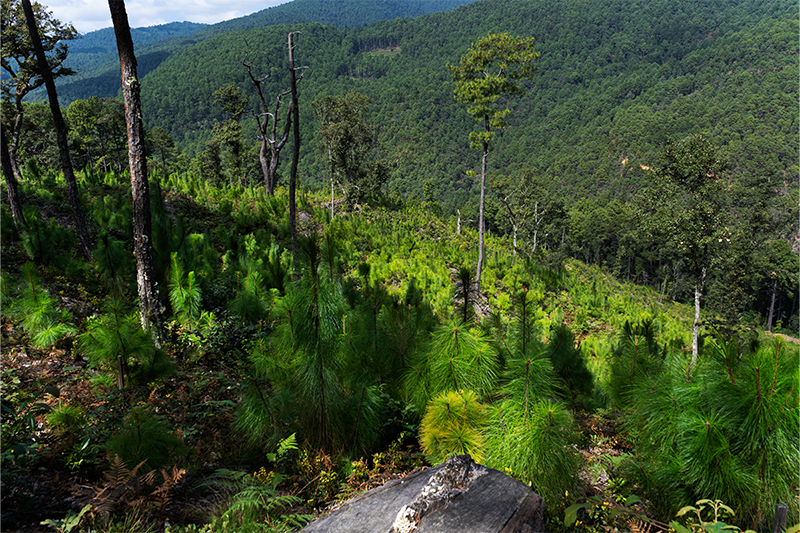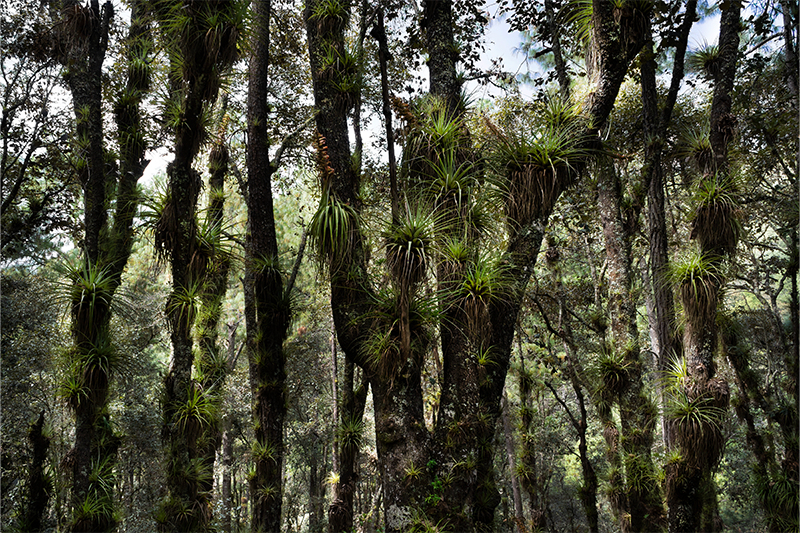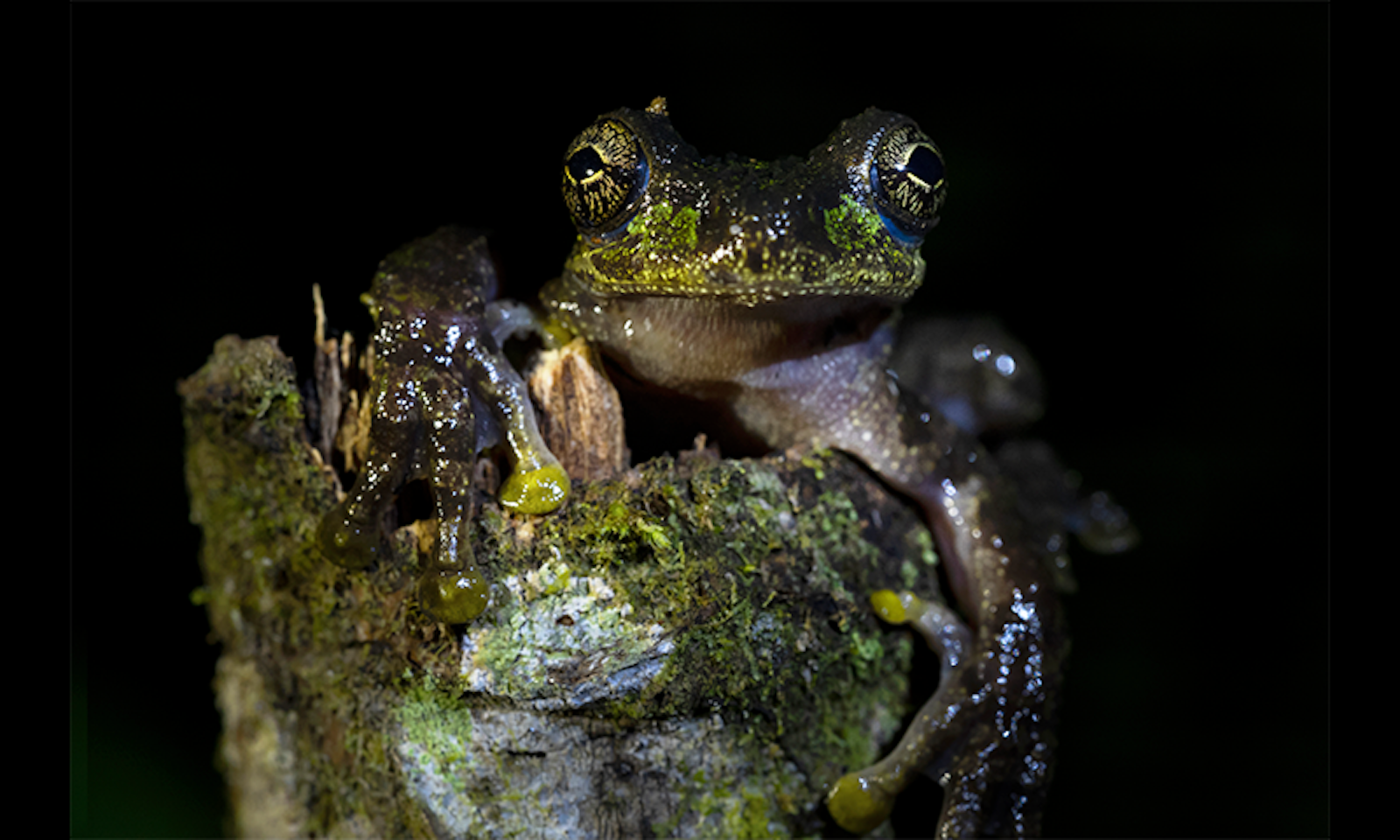Long slender fingers and toes wrap around a verdant branch, and a bulging yellow eye peers at me watchfully, the tiny mouth firmly set. I’m gazing through my camera lens at a Oaxacan Cloud Forest Tree Frog (Charadrahyla nephila). These frogs make their home, aptly, in the cloud forests of the Sierra Madre mountains in Oaxaca, Mexico. From snout to end, they measure just 2 to 3 inches long.
The tiny tree frog is one of a wealth of amphibian species that inhabit Oaxaca, a mountainous and heavily forested state in southern Mexico. Some of its neighbors include the Gloomy Mountain Stream Frog (Ptychohyla zophodes), the Chinanteca Salamander (Bolitoglossa chinanteca), the Mexican Fringe-limbed Tree Frog (Sarcohyla bistincta) and the Southern Highland Tree Frog (Dryophytes euphorbiaceus). I recently had the privilege of documenting them in their native habitat.

Mexico is the fifth most biodiverse country worldwide, and Oaxaca is the most biodiverse state in Mexico. It is home to 1434 species, half of the country’s terrestrial vertebrates, and at least 158 species of amphibians, from vibrant frogs and toads to slippery salamanders and caecilians. (Researchers continue to identify and catalog new ones, such as Charadrahyla esperancensis, a tree frog with a protruding snout discovered in 2017.) Part of what makes the state of Oaxaca so welcoming for amphibian species is its wide range of ecosystems: cloud, pine-oak, and broadleaf forests as well as meadows, valleys, beaches, and mountains.

But that welcome is in jeopardy: Amphibians are in the midst of the biggest extinction crisis in their history. In Mexico alone almost 58 percent of species are endangered, which means the population has declined by 50 percent or more over the previous 10 years (or three generations), the current population is fewer than 250 individuals, or other factors that put it at high risk of extinction. The single biggest factor in their decline is the destruction and exploitation of their habitat. In La Chinantla in northern Oaxaca, for instance, a water concession belonging to Grupo Modelo, a Mexican brewery, threatens the cloud forest ecosystem. Other land use changes that pose a menace include mining, aquaculture, cattle breeding, logging, and urban development.

Amphibians are highly sensitive to changes in their environment, in part because they require different habitats over their life cycles—they begin their lives in water and end them on land. Ecosystem disturbances also make it easier for a fungal disease that affects amphibian populations called Chytridiomycosis to spread. And many of the amphibians residing in Oaxaca have limited distribution ranges, which places them at greater risk for extinction. For these reasons, the IUCN has listed many of the amphibians residing in Oaxaca under the “Endangered” or “Vulnerable” categories on the Red List of Endangered Species. (Vulnerable species are ones that have experienced population declines of 30 to 50 percent, and have populations of fewer than 1,000 individuals, among other factors.)

But Oaxaca’s diversity extends beyond its wildlife—it’s also culturally and ethnically diverse and a bastion of indigenous culture. In fact, the best hope for conserving the vast amphibian biodiversity in the state of Oaxaca may be the many indigenous communities who live there, such as Santa Catarina Lachatao and Capulálpam de Méndez in the Sierra Madre, and La Chinantla in the northern part of Oaxaca. Indigenous cultures in Mexico have maintained sustainable agriculture, farming, and forestry traditions for generations, and manage about 60 percent of Mexico’s forests, totaling over 100 million acres. Recently, some of their conservation efforts have made measurable impacts on biodiversity in Oaxaca. One study from 2021, for example, assessed the distributions of certain amphibian species in indigenous territory in the Sierra Madre and found that community conservation practices substantially increased the ranges of several species under high risk of extinction.
With support and luck, perhaps these culturally rich indigenous communities can help the Oaxacan Cloud Forest Tree Frog and its cousins in the amphibian family to thrive. ![]()
Lead Photo by Tamara Maria Blazquez Haik




























